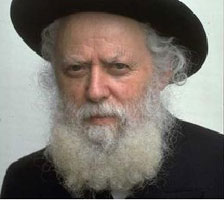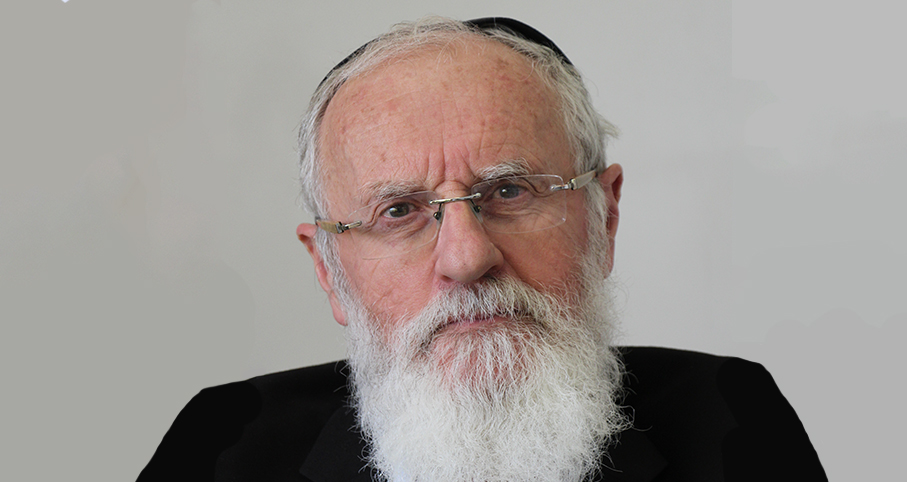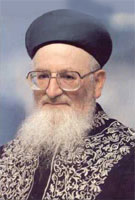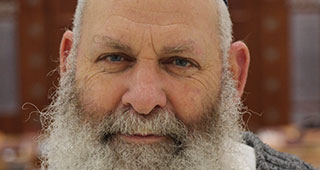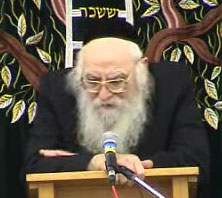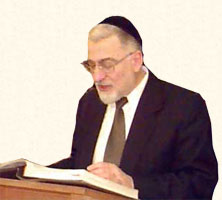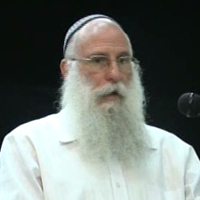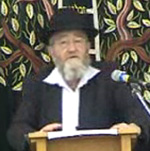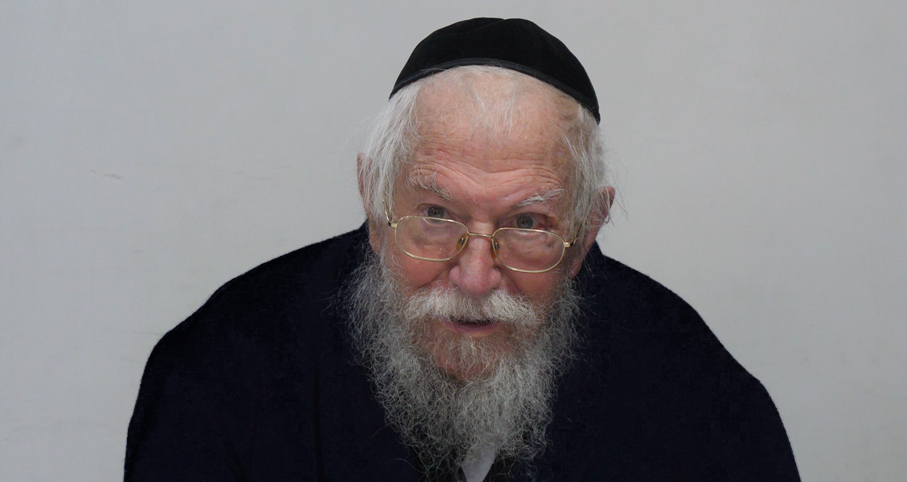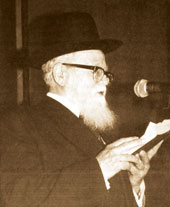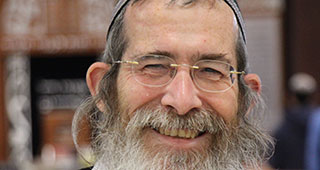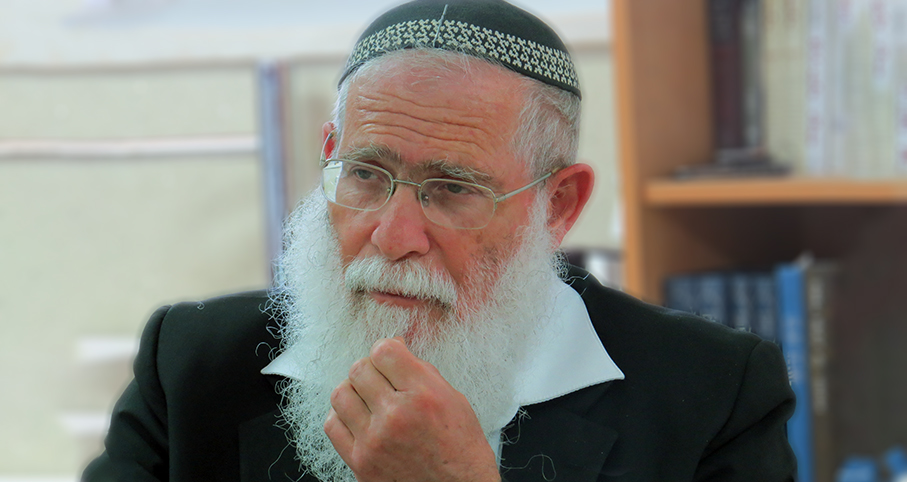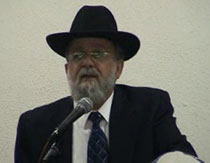Beit Midrash
- Jewish Laws and Thoughts
- Jewish Laws and Customs
- Tzitzit & Tefillin
As explained in last week’s article, the batim consist of three parts: (a) the box part, called the ketzitzah, in which the parshios are placed, (b) the titura, the base on which the ketzitzah rests, and (c) the ma’avarta, through which the straps (retzuos) are inserted. The width of both the ketzitzah and the titura must be exactly the same as the corresponding length so that they are perfectly square, and there should be no nicks, dents, or bulges that ruin their perfect squareness or the evenness of their sides. Someone concerned about the mitzvah should therefore purchase batim made from gasos, which means the hide of a mature animal. Gasos batim last much longer, have many hiddurim in halacha, and can be repaired if they become damaged.
We also discussed two halachic disputes regarding the manufacture of the shel rosh. One shaylah concerned gluing the compartments of the shel rosh together, and another concerned whether the shin on the outside must be pulled out manually before it is molded.
As explained last week, most stages of tefillin production, from tanning to painting and sewing, must be performed "lishmah." Therefore, each stage is begun by an observant Jew who declares that his work is for the sake of kedushas tefillin.
In last week’s article, I discussed the manufacturing of the batim. Several steps of tefillin manufacture were not described last week, including painting, making the retzuos, and placing the parshios in the bayis and sealing it. We also did not discuss at all the writing of the parshios, which is where we will begin this week’s article.
Writing the parshios
Before starting to write, the sofer must state that he is writing these parshios for the sake of the mitzvah of tefillin (see Rosh, Hilchos Sefer Torah Ch. 2; Tur Orach Chaim Chapter 32). In addition, every time he writes any of the names of Hashem, he must first state that he is writing the name for kedushas Hashem. If he did not make these statements verbally, it is questionable whether the tefillin are kosher (see Rama, Orach Chaim 32:19; Rabbi Akiva Eiger comments on Shulchan Aruch 32:8).
The parshios must be written with meticulous care, since an error that affects the kashrus of a single letter invalidates the entire tefillin (Menachos 28a). Thus, if only one letter is missing or written incorrectly, the tefillin are posul, and the person who wears these tefillin has not fulfilled the mitzvah (Shulchan Aruch Orach Chaim 32:23). Furthermore, all the brachos he recites on the tefillin are in vain.
Here are some examples of mistakes that can occur while writing tefillin. If two letters touch one another, the tefillin are posul (Menachos 34a; Shulchan Aruch Orach Chaim 32:4).
The same thing is true if the sofer intended to write one letter and, instead, wrote something that looks like a different letter or does not meet the halachic requirements of how the required letter must be written. For example, if a sofer intended to write the letter "zayin" and made it so long that it could be read as a "nun sofis," the tefillin are invalid. Similarly, if the sofer intended to write the letter "reish," which is supposed to have a rounded upper right corner, and instead wrote it with a square corner, the tefillin are invalid.
Sometimes the letters of the parshios may seem perfect, and yet the tefillin are absolutely posul. For example, the letters written in tefillin (as well as sifrei Torah and mezuzos) must be written or formed directly. A letter cannot be formed indirectly by scratching off ink around the letter, until only the letter remains. This halacha is called "chok tochos," which literally means, "hollowing out the inside."
(The origin of this expression is from a case in the Gemara where a get was written by carving a piece of wood until the letters projected. This get is invalid, since the letters of the get were not written but were formed indirectly by removing the area around them. This does not fulfill the Torah’s requirement that a get be written [Gittin 20a]. "Writing" requires that the letters must be formed, and not created indirectly.)
Therefore, if a sofer wrote the letter "dalet" instead of a "reish," it is halachically invalid to erase the sharp corner of the "dalet" and form a "reish" (Tur Orach Chaim Chapter 32, quoting Sefer Haterumos). If someone did this, he has not written a "reish" but rather he formed a "reish" indirectly, and this is not considered "writing." Any tefillin, sefer Torah or mezuzah made this way will be invalid (Shulchan Aruch Orach Chaim 32:18).
If a sefer Torah was written through "chok tochos," the letter can be erased and rewritten. However, if this problem occurs in tefillin or mezuzos, the parsha will often be irreparable (Taz 32:16), and the parsha will have to be put into sheimos (genizah).
Why not fix it?
Why can’t this mistake be corrected?
Halacha requires that the parshios of tefillin and mezuzos be written in the order in which the words appear in the Torah (rishonim, quoting Mechilta, end of Parshas Bo). This requirement is referred to as being written "kesidran," in their proper sequence. For this reason, if a letter was skipped and filled in afterwards, the tefillin or mezuzah is posul and cannot be corrected. Similarly, if a "reish" was mistakenly written as a "dalet," and the problem was discovered after more letters were written, the parsha is posul, unless one erases all the letters written after the invalid "reish."
The law of kesidran (in their proper sequence) applies only to tefillin and mezuzos. Sifrei Torah, megillos, and other holy writings do not have this rule, and their letters may be written out of order. Therefore if some of their letters become posul, they can be corrected.
Thus, we see that there are instances that cannot be checked, in which we are completely dependent on the integrity of the sofer. After investing many hours writing a beautiful parsha, a sofer checks the parsha and discovers that one of its letters was written incorrectly in a way that might invalidate the parsha. He takes the parsha to his rav, who paskins that the parsha is indeed posul and cannot be rectified. If the sofer lacks integrity, what is to stop him from fixing the invalid letter so that it now appears one hundred percent kosher?
Fortunately, tefillin and mezuzos purchased from reputable sources should not have problems of dishonesty like that just described. However, one should still try to find out about the sofer whose tefillin one’s son will be wearing. Although it is difficult to check whether someone is a yarei Shamayim, one should at least attempt to ascertain whether the sofer appears to be a yarei Shamayim.
Furthermore, the sofer must be thoroughly familiar with the halachos of writing tefillin or he will certainly produce posul tefillin. There are literally hundreds of ways that a non-knowledgeable sofer can write tefillin that will be invalid. Thus, when purchasing tefillin, one must insist that the sofer who wrote them is knowledgeable in the halachos of safrus and that he has up-to-date certification from a recognized organization or posek. Some of these organizations insist that the sofrim they certify take periodic examinations to ascertain that they are still competent in the halachos required for their profession.
A modern innovation
After the sofer finishes writing the tefillin parshios, he reads them over several times, and then they are checked by a specially trained examiner, or even better, by two trained examiners. In our era, the checking process has been tremendously enhanced by a modern innovation – computer-checking. The written parshios are scanned into a computer that has a program comparing the written parshios with the computer’s version. The computer checks for missing and extra letters and words, for poorly and mistakenly formed letters, for connected or cracked letters and for other errors.
Experience has proven that computers have an infinite attention span and never get distracted by boredom or exhaustion. (Of course, the computer’s proper performance depends on an alert operator.) So, it is common for computers to catch mistakes that humans overlook. There is a recorded instance of a pair of tefillin that was checked nine different times without discovering that a word was missing, until it underwent a computer-check! When purchasing tefillin, one should insist that the parshios be computer-checked.
However, one may not rely only on a computer-check of the tefillin since, at present, computers cannot check for certain items such as proper spacing between letters and words.
It should be noted that neither the examiner nor the computer can detect certain problems that occur, such as letters written out of order and letters formed through "chok tochos." This is why the sofer’s yiras shamayim and his halachic knowledge are absolutely indispensable.
Painting
The batim are painted jet-black using paint containing only kosher ingredients (Shulchan Aruch 32:40). Because there is little space between the compartments of the shel rosh, it often happens that after the painting one can no longer see the separation between the compartments. Since the individual compartments must be visible, the batim macher carefully separates the compartments from one another with a razor.
On inferior batim, non-scrupulous batim machers may merely scratch the outside of the bayis to mark where the four compartments actually are. This is invalid; there must be four separate compartments, both inside and outside. Alternatively, sometimes a deep groove is mistakenly scratched in the wrong place and does not demonstrate the actual separation between the compartments. This is also invalid. A responsible batim macher cuts between the compartments, to guarantee that they are indeed fully separate, even after the painting.
Some poskim contend that one should also request that the parchment used for the parshios be only avodas yad. If one chooses to order avodas yad parchment, ask for extra thin parchment. This special parchment is less likely to crack when rolled and inserted into the batim, and thus, there is less likelihood that the letters will eventually crack. It is also easier to fit the thin parchment properly into the batim. The difference in cost for this parchment is fairly small, relative to the overall cost of the investment in the pair of tefillin.
Rolling up the parshios
All the components of the tefillin are now complete, and it is time to insert the parshios into the bayis. Before being placed into the ketzitzah, each parsha is rolled from left to right, and then tied closed with a bovine tail hair (Elyah Rabbah 32:43). These hairs should preferably be from a calf, to remind us of the sin of the eigel hazahav, the golden calf (Beis Yosef, quoting Shimusha Rabba). The parsha is then wrapped in a blank piece of parchment, and this parchment is then tied closed with another bovine hair. (According to Rambam, Hilchos Tefillin 3:1, these last two steps are both halacha leMoshe miSinai.) One or more of these hairs is pulled through a hole on the right side (from the perspective of the wearer) in front of the bayis. This hole is one of those that will be soon be used to stitch the titura closed. Thus, the hair used to tie the parsha closed is visible on the outside of the tefillin (Zohar).
According to Rashi’s opinion, which is the halacha, the parshios are now inserted according to the order that they appear in the Torah. Thus, the first parsha, Kadeish li kol bechor (Shemos 13:1-10), fills the leftmost compartment (from the perspective of the wearer), with Vehayah ki yeviacha (Shemos 13:11-16) next to it. Shema (Devorim 6:4-9) is placed next; and Vehayah im shamo’a (Devorim 11:13-21) is inserted inside the rightmost compartment. However, according to Rabbeinu Tam, the last two parshios are reversed, with Shema in the rightmost compartment and Vehayah im shamo’a next to it. (There are, also, at least two other opinions concerning the correct order of the parshios.)
Although we fulfill the mitzvah with Rashi tefillin, the Shulchan Aruch states that a G-d fearing person should wear Rabbeinu Tam tefillin, in addition to wearing Rashi tefillin (Orach Chaim 34:2). However, the Shulchan Aruch qualifies this ruling by stating that only a person known to observe beyond the requirements of halacha is permitted to wear Rabbeinu Tam tefillin (Orach Chaim 34:3). This is because of the prohibition against being pretentious in one’s Yiddishkeit. Ashkenazim follow the Shulchan Aruch’s ruling. However, the practice among many Sefardim and chassidim is that all married men wear Rabbeinu Tam tefillin. In their opinion, once many people follow a certain practice, it is no longer ostentatious for an individual to observe it.
Big parshios
The parsha should fit completely inside its compartment. Sometimes the shel yad parsha is too tall to fit properly in the ketzitzah and the bottom of the parsha protrudes into the titura, a situation that should be avoided (Shu"t Shevet Halevi 3:3; Shu"t Yabia Omer 1:2:5). If the person who orders the tefillin coordinates the correct size with the sofer and the batim macher, this problem can be avoided.
Sewing the titura
After the parshios are placed into their appropriate compartments, the titura is sewn closed. There is a halacha leMoshe miSinai that this stitching must be made with sinews (giddin; singular, gid) of a kosher animal (Shabbos 108a). There is another halacha leMoshe miSinai that these stitches must form a perfect square (Menachos 35a). This is something that a person can readily check on his own tefillin. I have often seen tefillin where the stitching or the punching of the holes is sloppy, making the stitching not square. This makes the entire pair of tefillin posul!
The tefillin should be stitched with a single length thread of sinew (Shulchan Aruch Orach Chaim 32:51). Although there are lenient opinions that one can tie two pieces of gid together, insist that your tefillin be stitched with a single gid.
Some batim machers glue the top and bottom titura together, in addition to the stitching, to help the titura stay closed. Some poskim contend that this practice invalidates the tefillin, since the halacha leMoshe miSinai is that the titura should be closed only by stitching with giddin and with no other materials (Chazon Ish, Orach Chaim 11:10). One should consult with his rav whether to request that the titura not be glued.
We have now completed our lessons on the manufacture of the batim and the parshios. In our next and last installment, in two weeks, we will discuss the manufacture of the retzuos, proper maintenance of kosher tefillin, and how to purchase them.
This Shiur is published also at Rabbi Kaganof's site

A Tefillin Shoppers Guide
Rabbi Yirmiyohu Kaganoff | Av 12 5779

Mistake in Beracha on Delayed Laying of Tefillin – part II
Rabbi Daniel Mann | Sivan 8 5782

How to Tell When Your Tefillin Need Adjustment
Rabbi Daniel Mann | Tevet 8 5776



